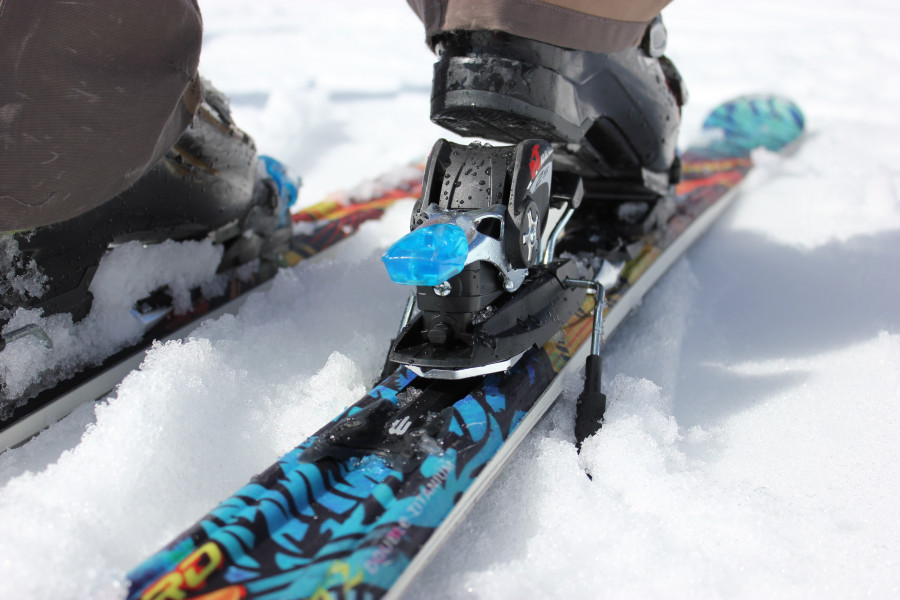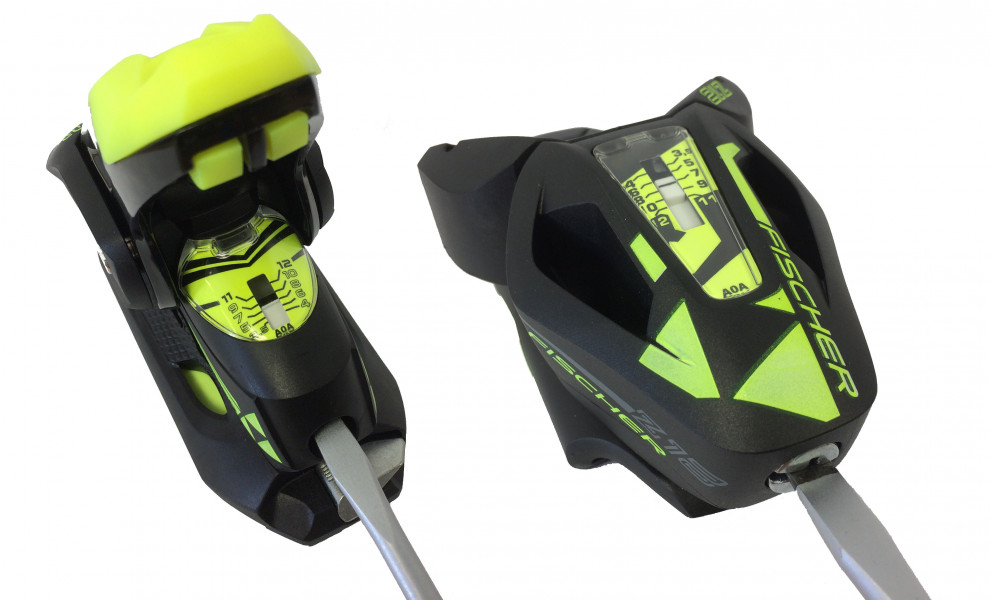Can I Set My Own Ski Binding? Yes!
Before you can go skiing, you first need skis. Those skis then need a binding. And very importantly: the binding needs to be adjusted correctly and individually. Do you have to see a professional about this every time? Can you adjust the ski binding yourself? How do you adjust a ski binding? What is a DIN setting and how is it calculated? Snow-Online has the answers to all of your questions.
DIN Setting Calculator
Our Snow-Online DIN Setting Calculator helps you find the right DIN setting for your ski binding. Just fill in your bodyweight, boot sole length (in millimetres; usually engraved or printed on the outside of your boot's heel), skiing ability level, and age, and the calculator gives you the appropriate DIN setting:
--
How Do I Adjust a Ski Binding?
First things first: you don't have to see a professional every time you want to adjust your ski binding. A little knowledge about the function of a ski binding provided, you can easily adjust it yourself. What you need to understand is how the binding works, which DIN setting you need, and how to calculate it.
A ski binding has two main functions: on the one hand, it needs to fix the ski boot (and hence the skier) to the ski. On the other, the binding needs to release under force or when you fall, and separate the boot from the ski in time to keep the skier from being injured.
Complex mechanics help to manage this balancing act. Not only do they have to function impeccably, they absolutely need to be adjusted correctly and individually. According to a skier's bodyweight, boot sole length, age, and skiing ability, the release force setting, or DIN setting, determines when a binding releases.
What is the DIN Setting of Ski Bindings?
The DIN setting is the release force setting of a ski binding. It is the value that determines the amount of force effect needed for a binding to release in order to keep the skier from being injured. There are two officially approved methods to determine this DIN value:
The tibia method is mainly applied by professionals in Germany. With this method, the expert measures the width of the tibial plateau at you knee. Most frequently used all over the world, however, is the bodyweight method. It was developed in the USA and Switzerland, and is based on scientific analyses of skiing accidents.
According to bodyweight, boot sole length, skiing ability, and age, the weight method uses a table to determine the DIN setting. The higher the DIN setting, the later the binding releases, and the higher the risk of injury!
How Do I Calculate the DIN Setting?
To find the right DIN setting for a person using the bodyweight method, you first need the weight, sole length, ability level, and age of the person whose ski binding you want to adjust. Then you have to read the table correctly. Follow these five steps:
- First you want to find the line with your bodyweight inside of the DIN setting table.
- Then you look right to find the base DIN setting according to your sole length.
- Now is where the ability level comes in. We distinguish three different types of skiers:
Type 1: Beginners and cautious skiers who ski mainly on even to relatively even slopes with slow to medium speed.
Type 2: Intermediate skiers who ski mainly on relatively even to relatively steep slopes with higher speed.
Type 3: Very experienced skiers who ski mainly on relatively steep to steep slopes with high speed and pressure on the edges and in an aggressive manner.
- Now you can determine your DIN setting according to the skiing ability:
Type 1: The base DIN setting is the correct setting.
Type 2: The DIN setting one line below the base setting is correct.
Type 3: The DIN setting two lines below the base setting is correct.
- As a last step you can adjust the setting according to age: skiers under 10 or over 50 years old should move one line up to find the right DIN setting.
DIN Setting Table
| Weight in kg | DIN Setting in relation to the sole length (in mm) of your ski boot | |||||
|---|---|---|---|---|---|---|
| –250 | 251 – 270 | 271 – 290 | 291 – 310 | 311 – 330 | 330+ | |
| 10 – 13 | 0,75 | 0,75 | ||||
| 14 – 17 | 1,00 | 1,00 | 0,75 | |||
| 18 – 21 | 1,50 | 1,25 | 1,00 | |||
| 22 – 25 | 1,75 | 1,50 | 1,50 | 1,25 | ||
| 26 – 30 | 2,25 | 2,00 | 1,75 | 1,50 | 1,50 | |
| 31 – 35 | 2,75 | 2,50 | 2,25 | 2,00 | 1,75 | 1,75 |
| 36 – 41 | 3,50 | 3,00 | 2,75 | 2,50 | 2,25 | 2,00 |
| 42 – 48 | 3,50 | 3,00 | 3,00 | 2,75 | 2,50 | |
| 49 – 57 | 4,50 | 4,00 | 3,50 | 3,50 | 3,00 | |
| 58 – 66 | 5,50 | 5,00 | 4,50 | 4,00 | 3,50 | |
| 67 – 78 | 6,50 | 6,00 | 5,50 | 5,00 | 4,50 | |
| 79 – 94 | 7,50 | 7,00 | 6,50 | 6,00 | 5,50 | |
| 95+ | 8,50 | 8,00 | 7,00 | 6,50 | ||
| 10,00 | 9,50 | 8,50 | 8,00 | |||
| 11,50 | 11,00 | 10,00 | 9,50 | |||
Safety Note
As explained above, complex mechanics are responsible for the ski binding to fix the boot to the ski or release in time when the skier falls or force is applied, in order to prevent major injuries.
The ski binding is an important safety device. Whenever you adjust your ski binding yourself, you should thus be sure of what you're doing, and aware of the possible consequences of a DIN setting too high or too low.
If this is not the case, better keep your hands off the binding and see a professional!
Disclaimer
No responsibility is taken for DIN values calculated with the DIN Setting Calculator. No responsibility is taken for the DIN values in the DIN setting tables. TouriSpo GmbH & Co. KG as operator of Snow-Online assumes no liability.



